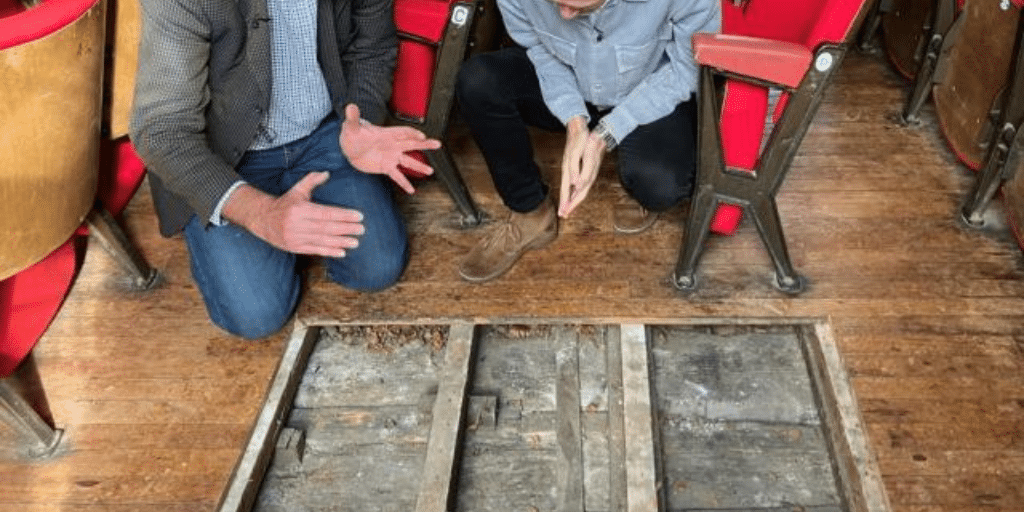Some of Europe’s most popular tourist attractions feature Shakespeare in one way or another –theatres, the town where he grew up, the house where he was born, and so on – and there is a new, exciting feature soon to be added.
How would you like to tap your feet on the only surviving stage from Shakespeare’s time, the original boards that he trod as an actor? Well, you may get that chance.
The story begins in 1592/3 when the plague shut the London theatres down. The young actor, Will Shakespeare, who had been taken in by Lord Strange’s theatre group at the Rose Theatre soon after his arrival in London in 1590 had become friendly with Strange’s writers, who were working day and night to supply the company with plays. He must have given them some reason for noticing him because our first glimpse of him is as a member of the writing ensemble working on the text that was to become Henry VI Part 2.
The writers were all young men – very talented young men – with names like Thomas Nashe, Thomas Kydd and one Christopher Marlowe. Shakespeare was to become very close to Marlowe in particular, both personally and professionally, as a collaborator, a rival and a friend. Marlowe had already been credited with several box office hits and now this young actor was working with him. How thrilling that must have been! Will was bitten by the bug and the rest, as they say, is history.
So there he was, acting full-time, with other young actors like Richard Burbage and Will Kemp who would become lifelong friends, and at the same time turning out plays, working with his other friends, the writers.
In 1592 Lord Strange was making changes in his company and some of the actors, including Shakespeare and Burbage, left to join the new company that Henry Herbert, 2nd Earl of Pembroke was putting together. And then the plague struck.
Lord Pembroke’s company left London and began touring. During 1592 and 1593 they performed in Bath, Coventry, York, Rye Ipswich, Leicester, Shrewsbury, and King’s Lynn . And it is in King’s Lynn, Norfolk, that this story really begins.
The touring players performed in the guildhalls of the towns they went to. When they arrived in Kings Lynn they set themselves up in the St George’s Guildhall, built in the early fifteenth century. It is still there and it is still staging plays. It is the oldest working theatre in the UK.
Recently, as they were renovating the hall, the workmen pulled up sections of the 75 year old floor and discovered what looked like the original floor two inches beneath it – thick heavy boards locked together and pegged through to some massive bridging beams – well worn and uneven. The theatre called in, an expert in historical buildings – Dr Jonathan Clark, who, using a combination of tree-ring dating and a survey of how the building was assembled, dated the floor to between 1417 and 1430.
That was a relatively straightforward piece of research. The Shakespeare connection is a bit more difficult but not frustratingly impossible as so much is when it comes to discovering the Bard’s life.
There has been much academic debate over the years about whether Shakespeare did actually act in King’s Lynn, but experts say the discovery is significant. There is no smoking gun but we think that Shakespeare was with Pembroke’s Men in 1593 and we know from written records that the company performed in King’s Lynn in 1593 and that Henry VI and Titus Andronicus, two plays Shakespeare had worked on with other writers, were in the repertoire. It’s quite an easy leap to place Shakespeare there.
It all seems to fall neatly into place and if, indeed, Shakespeare was there, he would have trod those boards at the performing end of the long hall. No doubt the floor will eventually be on display but whether you will be allowed to step on to it yourself is as yet unknown.
Perhaps you will be left just to stand and stare and imagine the actors jumping about and taking that now-sacred floor for granted!

Shakespeare’s boards in Norfolk Guildhall






Leave a Reply
Want to join the discussion?Feel free to contribute!